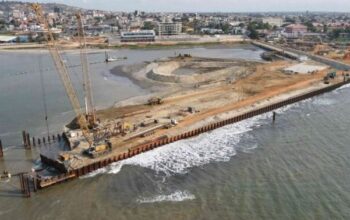The President of the Executive Committee of Sonangol’s Trading and Shipping Business Unit, Luís Manuel, stated on Tuesday in Luanda that the country’s oil production has remained stable and without significant declines in recent times, thanks to various ongoing actions.
According to the manager, as reported to Lusa, oil production has remained stagnant for quite some time.
“A series of actions have been taken to stabilize the declining progress. If you have been following, there hasn’t been a decline today that brings production levels below about one million barrels per day,” said Luís Manuel.
The President of the Trading and Shipping Business Unit pointed out that, at the moment, it cannot be affirmed that the decline affects more than the impact of the Brent price variation on the reported results.
The most relevant factors regarding the country’s achievements are the volumes of oil exported by Angola and the average price of crude oil in the international market.
“Our production has remained stable and without significant declines. Lately, we have been around the figure of just over one million barrels per day,” stated Luís Miguel to the press.
Exports
In the 2nd quarter of this year, Angola exported a total of 94 million barrels of crude oil, generating revenue estimated at more than seven billion dollars, at an average weighted price of 76.198 dollars per barrel.
Compared to the 2nd quarter of 2022, there was a decrease of 9.47 percent, during which the country exported 104 million barrels of crude oil, obtaining revenue estimated at over 12 billion dollars, at an average weighted price of 113.863 dollars per barrel.
These data were presented yesterday in Luanda by the Director of the Office of Studies, Planning, and Statistics (GEPE) of the Ministry of Mineral Resources, Petroleum, and Gas, Alexandre Garrett, during the presentation on crude oil and gas exports for the 2nd quarter of 2023.
With this result, the country records a decrease in revenue valued at five billion dollars, due to the value of seven billion dollars earned in the 2nd quarter of 2023. Compared to the volume of exports recorded in the 2nd quarter of 2022, amounting to 88 million barrels of crude oil, there was an increase of 6.71 percent.
According to Alexandre Garrett, concerning the value resulting from exports, there was an increase of 3.34 percent compared to the 1st quarter of 2023 and a decrease of 39.41 percent compared to the 1st quarter of 2022. He stated that out of the total volume exported, estimated at 94 million barrels of crude oil, 22.35 percent belongs to the National Agency of Oil and Gas (ANPG), and 16.35 percent belongs to Sonangol.
Regarding foreign companies, the following stood out: Total Energies (14.40 percent), BP (10.31 percent), SSI (8.09 percent), Eni (7.81 percent), Esso (6.95 percent), Cabgoc (5.99 percent), and Equinor (5.10 percent). The main traded branches during the 2nd quarter of this year were Mostarda (11.93 percent), Dalia (11.17 percent), Nemba (10.05 percent), Clov (9.63 percent), and Pazflor (7.06 percent).
The main destinations for oil exports were China (64.25 percent), India (6.20 percent), Brazil (4.25 percent), and Spain (4.05 percent). In the 2nd quarter of 2022, the main destinations were Italy (6.32 percent), the Netherlands (6.40 percent), India (7.31 percent), and China (54.79 percent).
Prices of Angolan branches
During the 2nd quarter of 2023, the prices of Angolan branches experienced a decreasing trend. The quarterly average was 76.198 dollars per barrel, while the dated Brent average was 78.053 dollars per barrel.
The highest average export price was 78.808 dollars per barrel, recorded in the Olombendo branch, and the lowest was 70.735 dollars per barrel, recorded in the Gimboa branch.
Alexandre Garrett said that the volume of LNG, LPG, and Condensates exported during the 2nd quarter of 2023 totaled 1,124,592 metric tons, valued at 542,368,323.62 dollars, at a price of 482,280 dollars. Compared to the 2nd quarter of 2022, the volume of LNG, LPG, and Condensates exported totaled 945,544 metric tons, valued at over 1.060 billion dollars.
LNG was mainly exported to the Netherlands (23.30 percent), France (15.48 percent), Germany (15.38 percent), and India (22.87 percent). Butane gas was destined for China, while propane went to Puerto Rico (13.87 percent) and China (9.62 percent).
Price variations
Alexandre Garrett pointed out that the unfavorable macroeconomic sentiment, China’s difficulties in recovering from the post-Covid-19 situation, signs of economic slowdown in the United States of America due to Federal Reserve (FED) policies, concerns about economic recession, increased interest rates by central banks, weak Chinese demand, and increased production from Russia and Iran are considered the main factors contributing to the decrease in oil prices.
The Director of GEPE also indicated that the announcement of OPEC production cuts, the extension of cuts to 2024, strengthening economic activities in the United States, increased refining margins in major trading centers, and increased fuel demand are considered the main factors contributing to the rise in oil prices in the international market.
![]()




